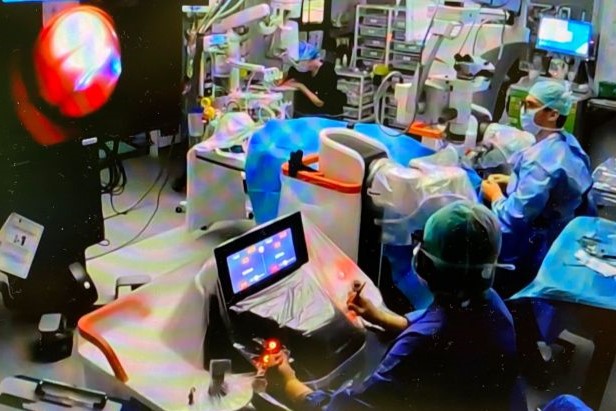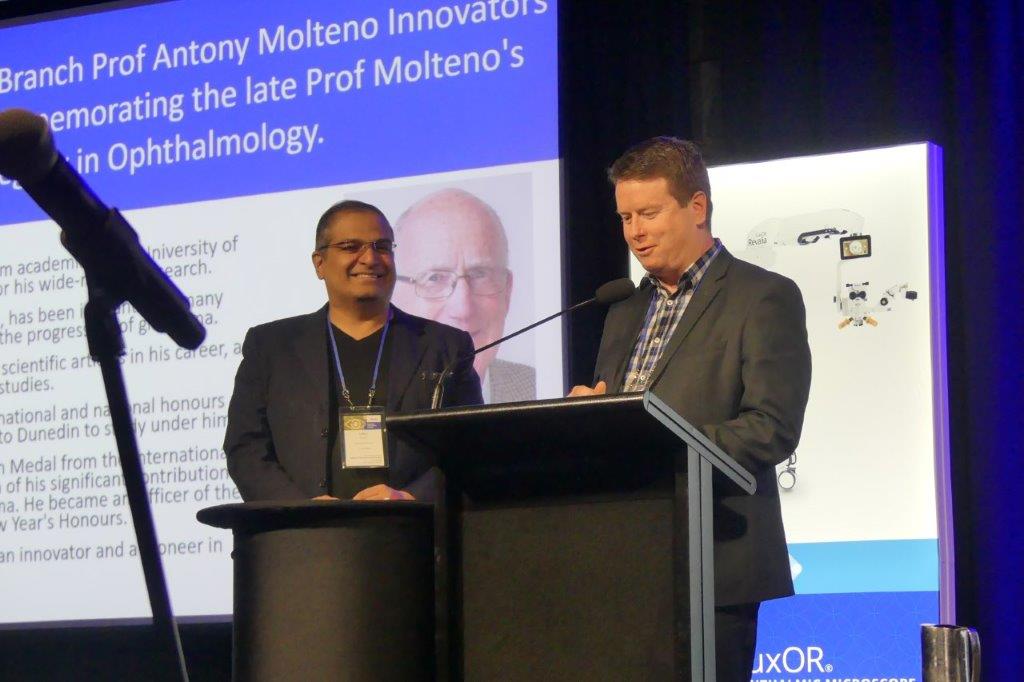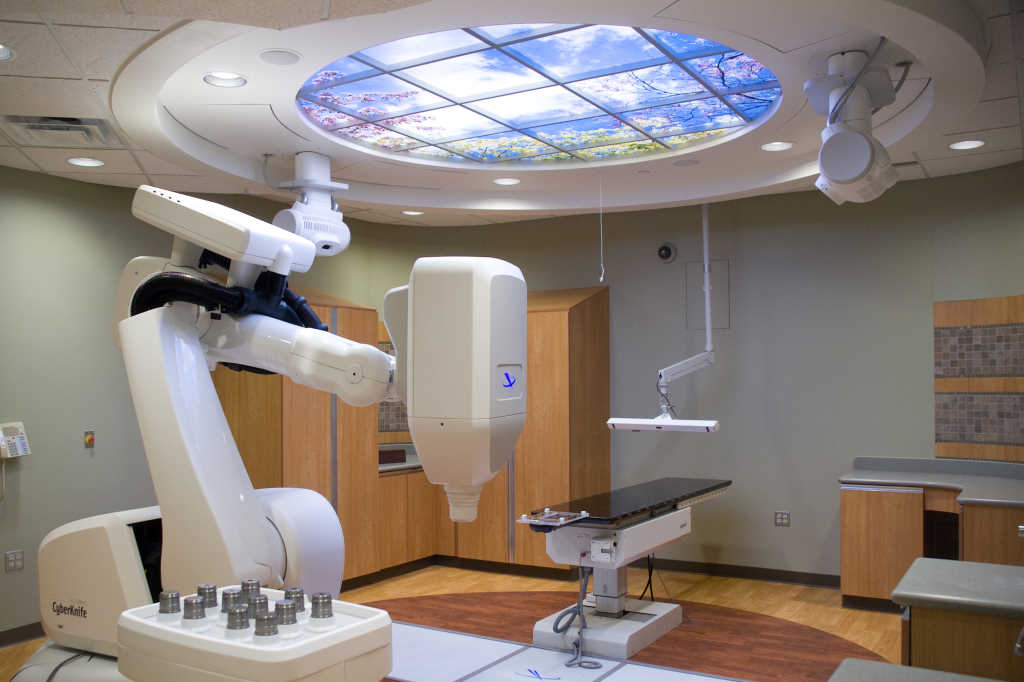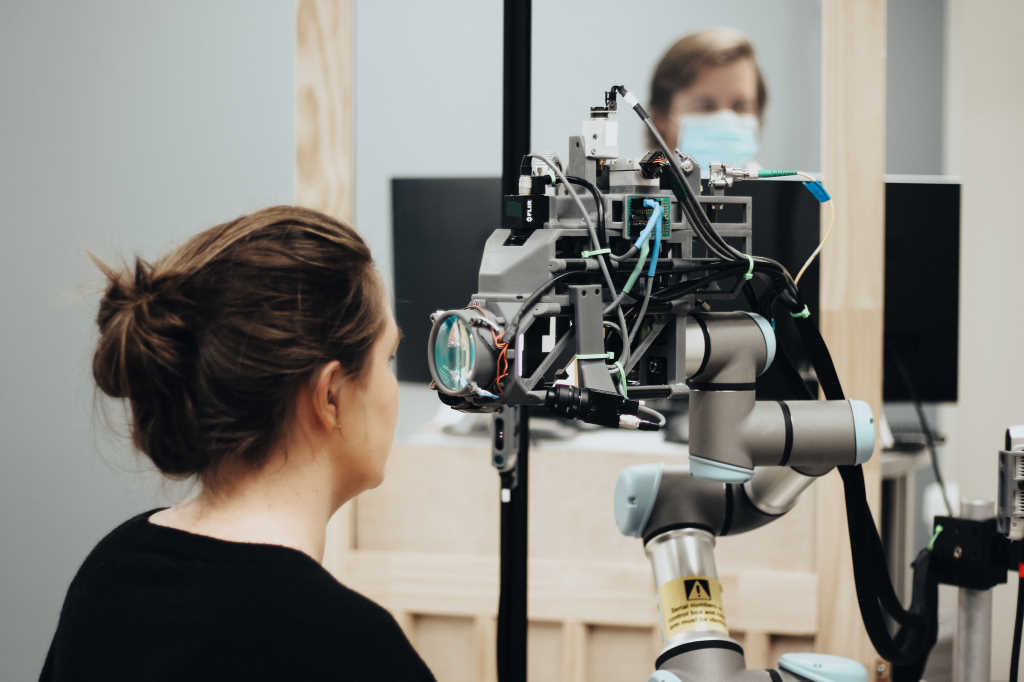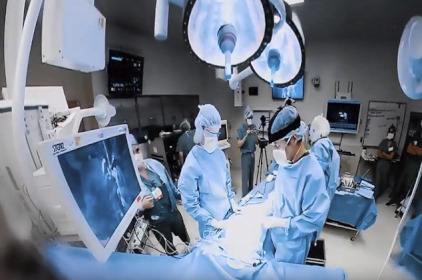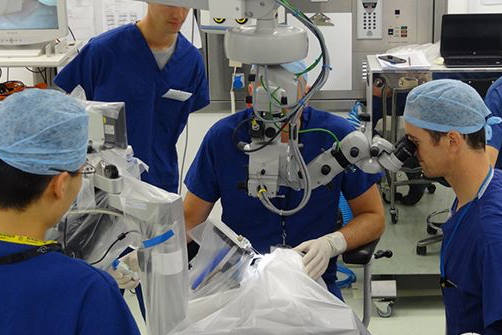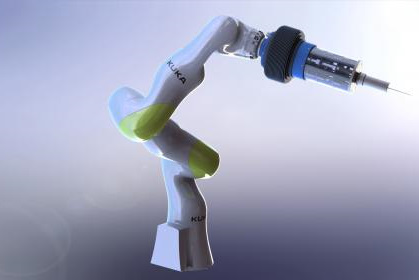Robot-delivered AMD treatment?
UK researchers have pioneered a robotically controlled device to enhance treatment for neovascular age-related macular degeneration (nAMD).
The innovative technology, trialled at King’s College Hospital and King’s College London, administers a precise, minimally invasive dose of radiation directly to the affected area of the eye followed by the patient’s routine injection treatment. Published in The Lancet, the results from the stereotactic radiotherapy (SRT) for nAMD (Star) study found that AMD patients who had the robotic radiotherapy required fewer anti-VEGF injections to control their disease compared to standard treatment, without sacrificing visual acuity.
Lead researcher Professor Timothy Jackson expressed optimism about the findings. “Our purpose-built robotic system allows for unparalleled precision in targeting macular disease, which could potentially reduce the number of injections needed by about a quarter. This represents a significant improvement in managing AMD and could enhance patients’ quality of life.”
SRT resulted in a 22% reduction (equivalent to 2.9 injections) in the need for ranibizumab retreatment over a two-year period following treatment. This reduction was consistently observed over time, showcasing the sustained benefit of SRT, reported the research team. SRT did not compromise best-corrected visual acuity (BCVA), which remained stable and comparable to outcomes seen with anti-VEGF monotherapy. However, questions remained about the compatibility of SRT with newer anti-VEGF agents or higher doses, which might affect its efficacy over time, they said.
The new robotic treatment not only offers clinical benefits but also economic advantages, potentially saving healthcare costs by reducing the frequency of injections, the researchers said, adding that further research is needed to explore its long-term effectiveness in broader patient populations.








